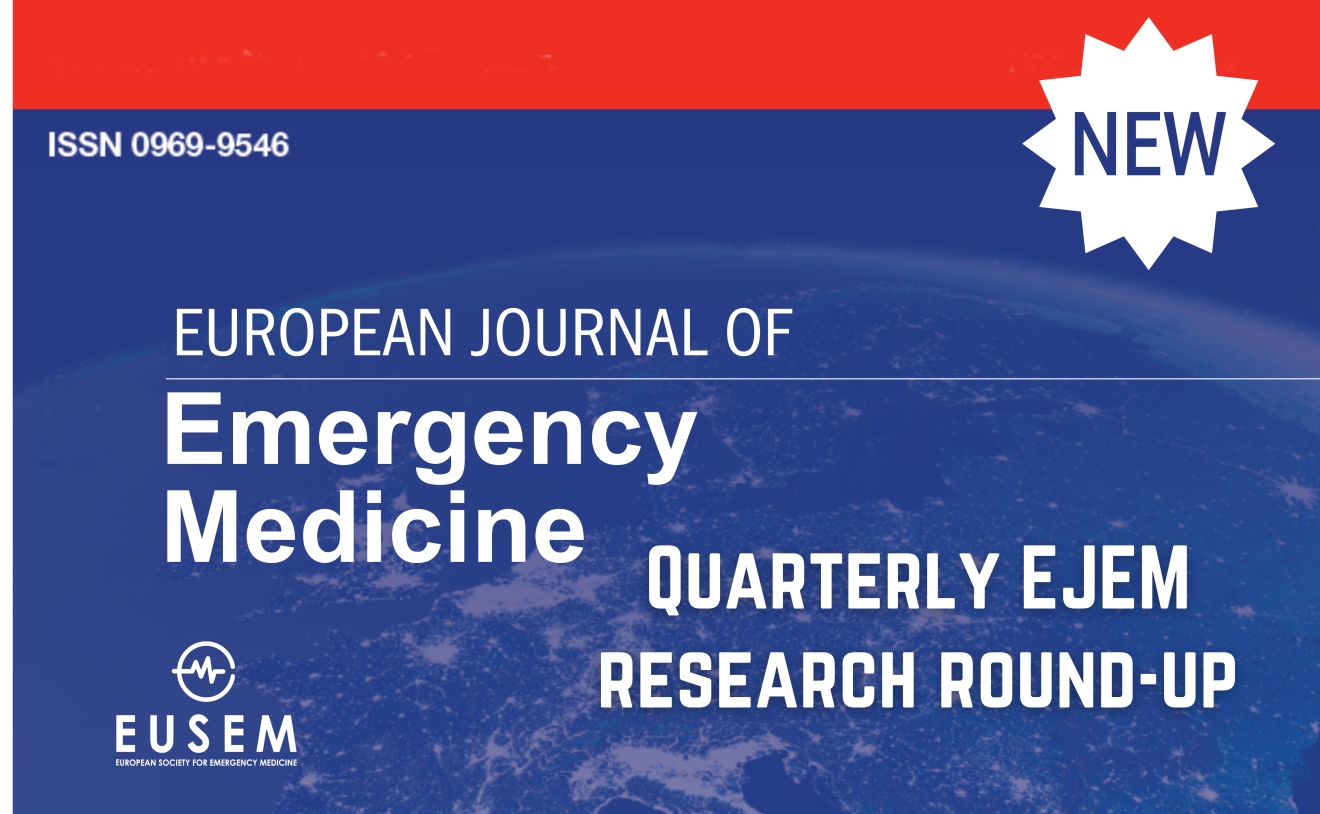New: Quarterly EJEM research round-up
Welcome to the quarterly EJEM research round-up, where we present our top picks from the last three months of EJEM editions.
Coisy et al published the results of an investigation into how gender and ethnicity affect acuity assignation.1 They surveyed 1563 emergency medicine consultants, trainees and nurses in France, Belgium, Switzerland and Monaco. Each participant was shown an image of a patient with a clinical scenario of a patient with chest pain. Each scenario was identical, as was the background to the image. The image was of a patient, created by the generative AI firm Midjourney, of a patient with their hand on their chest and their face expressing pain. The only variation between images were gender (woman/man) and ethnicity (Black/White/North African/Asian), so that each participant would see one of eight potential images. Participants were unaware of the objective of the study. Participants were asked to assign the priority level (1-5 scale, dichotomised to vital and non-vital emergencies) and to visually assess the severity of pain (0-10 scale) and. The authors found that women, compared with men, were less often assigned as a vital emergency (49% vs. 62%, difference 13% [95% CI 8–18%]) and were assigned lower pain scores (5.4±1.7 vs to 6.0±1.6 [P < 0.030]). They also found that ethnic appearance affected priority assignation, with, compared to white patients, a lower reported priority for Black patients [47% vs. 58%, difference −11% (95% CI −18% to −4%)] but not people of southeast Asian or North African appearance. This study, using a novel version of a simulation, is an excellent example of holding (what we may think on the face of it to be critical) variables stable whilst only varying parameters of absolute interest. So gender and ethnicity varied, whilst the clinical history and environment remained stable and the results are that there is a clear gender and ethnic bias identified when assigning priority and recording pain.
Chu et al looked at CT utilisation and diagnostic yield by performing a secondary analysis of the Headache in Emergency Departments (HEAD) study, which collected observational data on patients attending EDs with headaches.2,3 Chu et al found that among 5281 participants from 10 countries in five regions (Australia and New Zealand, Europe, Hong Kong and Singapore, and Turkey), CT was performed on average in 38.5% of ED patients with headache, and varied from 29% in Turkey to 46% in the EU. 10% of CTs performed for headache yielded clinically significant information, with most regions having a yield from 9-11%, except the EU with a yield of 5%.
Ravioli et al examined the effect of junior doctor strikes on ED flow in the UK.4 In the UK, junior doctors are those that are not on the national register of fully trained specialist doctors, and includes those in training and those not training. The rationale behind hypothesising there may be a difference is that on strike days, patients are more likely to be seen in the ED by fully trained EM physicians, and once referred, seen by fully trained in-patient specialists, which could impact on the time to definitive decision making. The authors compared strike days to the same day in the previous week (non-strike days) and their outcome measures were: proportion of patients in the ED for >4 hours due to any one of waiting for a first clinician, delay in treatment decision or waiting for an in-patient specialty decision; time in the ED; the number of patients admitted and discharged; and the number of patients that died in the ED. Strike and non-strike days were similar in terms of attendance rates, demographics and casemix. The authors found that the proportion of patients waiting >4 hours to be discharged was lower on strike days (41.5% vs 52.9%, P < 0.001), the total time in the ED was shorter on strike days (240 min vs 286 min, P < 0.001), it was quicker to see a first clinician on strike days (45 min vs 101.5 min, P < 0.001), time to treatment was reduced on strike days (91 min vs 141 min, P < 0.001). There were no differences in the proportion of patients referred to an in-patient specialty, admission rates, or mortality rates. These data suggest that strikes lead to improved ED operational parameters, most likely because patients are seen by more experienced clinical staff than on non-strike days. Although this may be good for urgent and emergency care, there are insufficient data to conclude that there is a clinical benefit. There are also no data on patient experience. It must also be noted that the consequence of staffing EDs with fully trained clinicians from all specialties is the necessary cancellation of clinics and elective care (the intended consequence of industrial action).
References
- Coisy F, Olivier G, Ageron F-X, et al. Do emergency medicine health care workers rate triage level of chest pain differently based upon appearance in simulated patients? European Journal of Emergency Medicine 9900:10.1097/MEJ.0000000000001113. doi: 10.1097/mej.0000000000001113
- Kelly AM, Kuan WS, Chu Kevin H, et al. Epidemiology, investigation, management, and outcome of headache in emergency departments (HEAD study)—A multinational observational study. Headache: The Journal of Head and Face Pain 2021;61(10):1539-52. doi: https://doi.org/10.1111/head.14230
- Chu Kab, Kelly A-Mcd, Keijzers Gefg, et al. Computed tomography brain scan utilization in patients with headache presenting to emergency departments: a multinational study. European Journal of Emergency Medicine 2023;30(5):356-64.
- Ravioli Sa, Jina Ra, Risk Ob, et al. Impact of junior doctor strikes on patient flow in the emergency department: a cross-sectional analysis. European Journal of Emergency Medicine 2024;31(1):53-58.
By Ben Bloom, Associate Editor of European Journal of Emergency Medicine.

